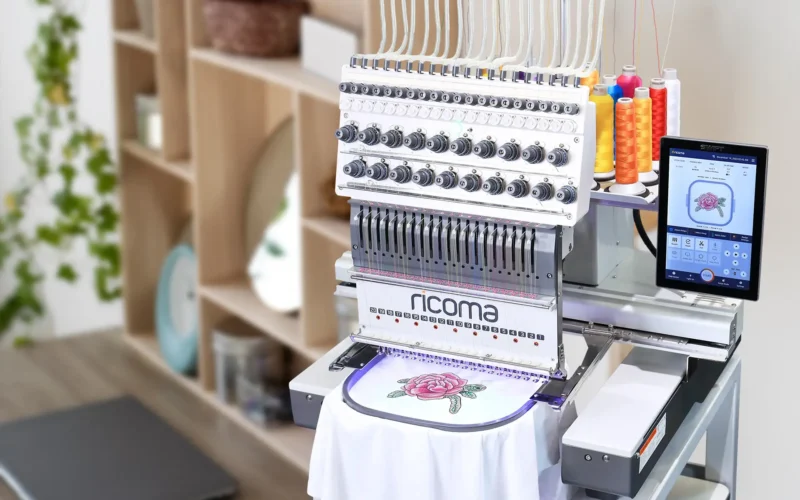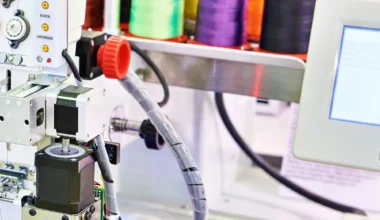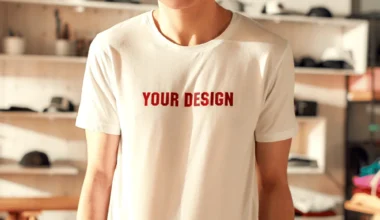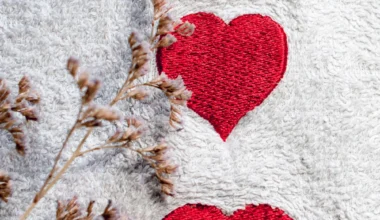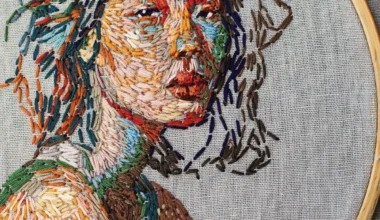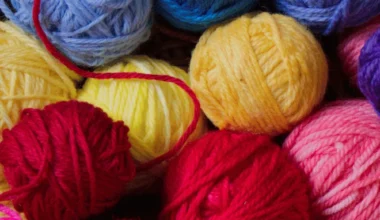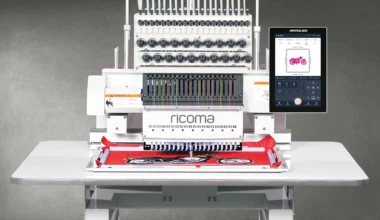Starting a home-based embroidery business is becoming more and more popular. After all, who doesn’t love the idea of doing what they love every day from the comfort of their home?
Having a home embroidery machine allows you to create personalized items like apparel, caps, and bags without the high overhead costs associated with larger commercial operations.
Choosing the best home embroidery machine is crucial to meet your specific business needs and stay within your budget. The right home embroidery machine will help you produce high-quality designs efficiently and keep your customers happy!
Understanding Your Business Needs
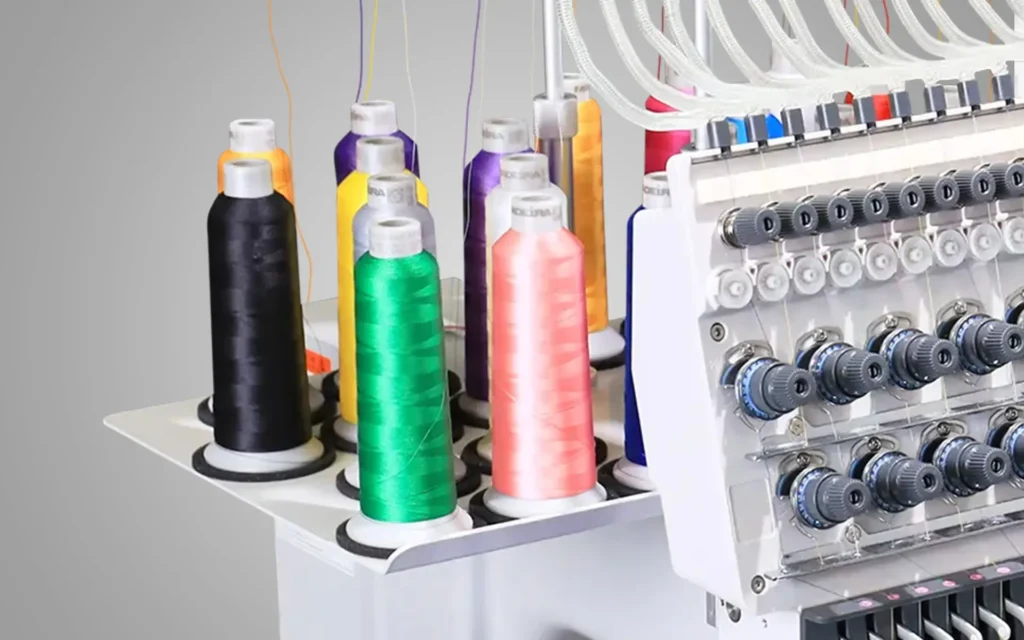
First, identify your target customers and the products you plan to offer. Are you going to focus on customizing t-shirts, hats, or tote bags? Knowing what you will be embroidering helps determine the features you need in a machine.
Some embroidery machines are better suited for flat items like shirts, while others are designed to handle more complex shapes like hats.
Next, assess your expected production volume. Estimate how many items you plan to embroider each week or month. This will help you decide on the machine’s speed and capacity. If you plan to produce a high volume of items, you’ll need a machine that can handle the workload without overheating or breaking down.
EM-1010 How-To: Ricoma Embroidery Machine Assembly- Unpacking Your Machine
Setting a realistic budget is also important. Home embroidery machines come in a wide range of prices and financing options, and it’s easy to get carried away with features you might not need. You should first determine how much you are willing to spend and remember to factor in additional costs like embroidery software, extra hoops, threads, stabilizers, and regular maintenance.
Then, you can begin your research and compare our embroidery machines to find the best fit for you. Investing in the best embroidery machine for home use might be more expensive upfront, but it will pay off in the long run with fewer repairs and better results.
Key Features to Consider
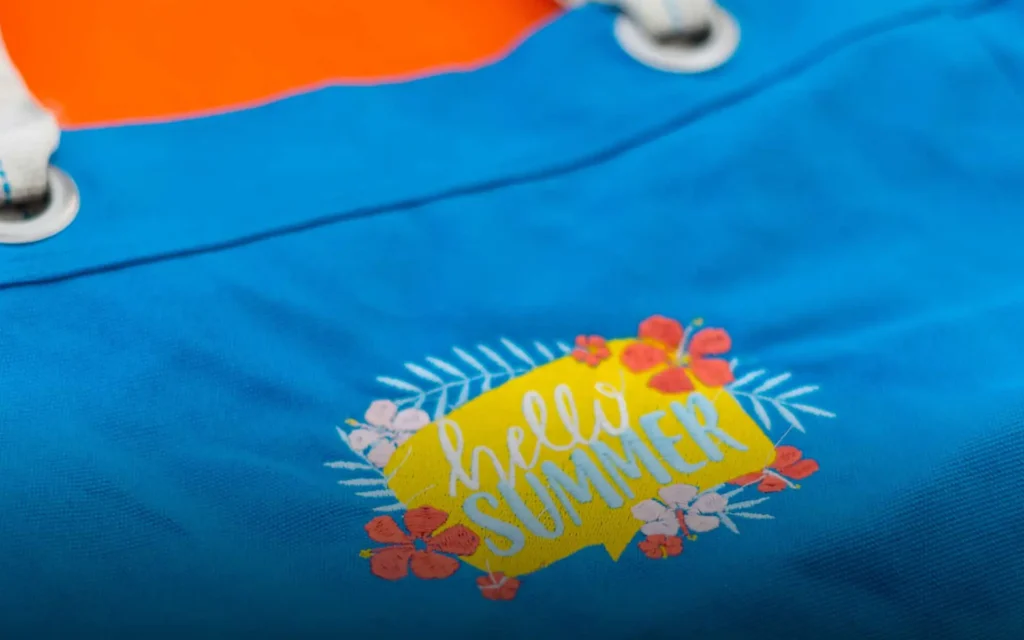
Choosing the right embroidery machine for your business is crucial to ensure you can meet your production needs and create high-quality designs. Here are some key features to consider when making your decision.
Machine Type and Size
When it comes to an at-home embroidery machine, you can choose between single-head and multi-head machines.
Single-head machines are ideal for small businesses or home use. They are more affordable and take up less space. However, they are slower since they can only work on one design at a time.
Multi-head machines, on the other hand, are faster and more efficient because they can work on multiple designs simultaneously. They are more expensive and require more space but are worth the investment if you have a high production volume.
Another consideration is whether you want a portable or stationary machine. Portable machines are lightweight and easy to move, making them perfect if you need to take your machine to different locations. Stationary machines are larger and sturdier, providing more stability and durability, which is ideal if you have a dedicated workspace.
Home embroidery machines are generally smaller and less expensive than commercial-grade machines. They are suitable for hobbyists or small business owners with lower production needs. Commercial-grade machines are built for high-volume production, offering more advanced features, greater durability, and a higher price tag.
Embroidery Area and Hoop Sizes
The maximum embroidery area of a machine is an important factor to consider. This is the largest area the machine can embroider in one go without re-hooping the fabric. If you plan to create larger designs, you’ll need a machine with a larger embroidery area.
Different hoop sizes allow you to work on various design sizes and shapes. Some machines come with multiple hoop sizes, giving you more flexibility. Quick-change hoops are a convenient feature that allows you to switch hoops quickly, saving time and increasing production efficiency.
Stitch Options and Built-In Designs
Different embroidery machines offer various stitch types, including satin stitches, fill stitches, and decorative stitches. Each type of stitch has its own application, so it’s important to choose a machine that offers the stitch types you need for your designs.
Built-in designs can be a great asset, especially for beginners. These pre-installed designs can save time and help you get started quickly. Additionally, having the ability to import custom designs is crucial for creating unique and personalized items.
Lettering capabilities are also important if you plan to add text to your designs. Look for machines that offer a variety of fonts and editing options to customize the text as needed.
Thread Management and Color Capability
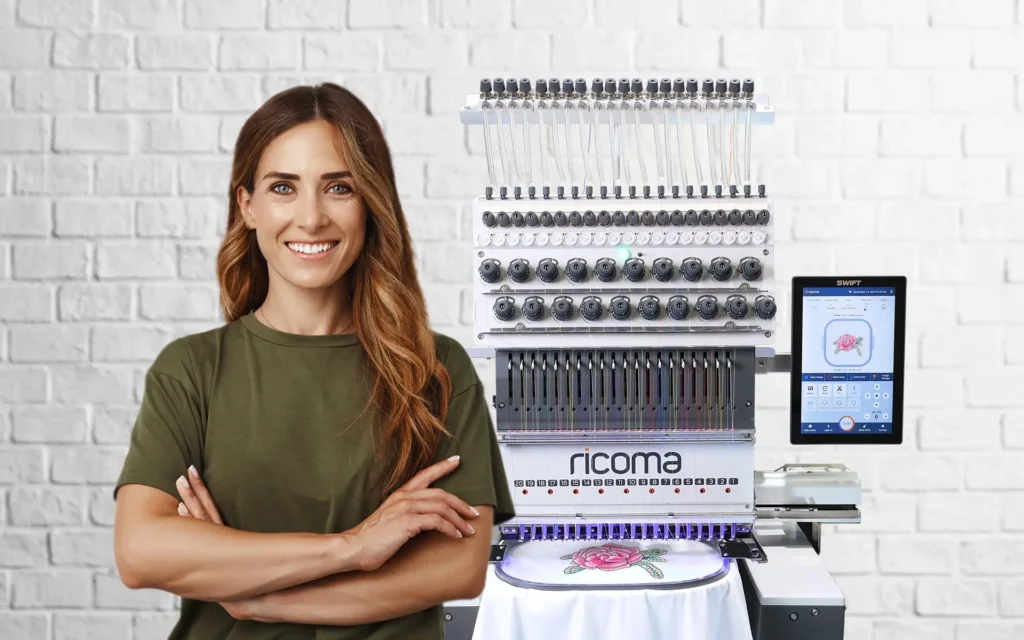
Multi-needle machines allow for quicker color changes and faster production times.
Automatic thread trimming is a convenient feature that cuts the thread automatically at the end of a stitch, saving time and reducing manual work.
Proper thread tension is essential for achieving high-quality stitches. Machines with adjustable thread tension allow you to fine-tune the tension to suit different fabrics and threads, ensuring consistent and professional results.
Ease of Use and User Interface
A user-friendly touchscreen display can make navigation and operation much simpler. With a touchscreen, you can easily select designs, adjust settings, and preview your work before starting. This feature is especially beneficial for beginners who might find traditional button controls confusing.
MT-1501 How-To: Control Panel – Overview
On-screen editing is another convenient feature to look for. This allows you to make adjustments to your designs directly on the machine without needing a computer. You can resize, rotate, and modify your designs on the spot, saving time and making the process more efficient.
Access to tutorials and support is crucial, especially when you’re learning how to use a new machine. Many modern embroidery machines come with built-in tutorials or access to online resources that can guide you through various functions and troubleshooting steps. Having customer support available can also be a lifesaver when you encounter issues or need expert advice.
Durability and Maintenance
Look for a machine that is well-built with high-quality materials. This will not only ensure longevity but also consistent performance.
A comprehensive warranty gives you peace of mind, knowing that any manufacturing defects or issues will be taken care of. Additionally, having access to reliable service centers or technicians can help keep your machine in top condition with regular maintenance and repairs.
Basic maintenance tasks for embroidery machines include cleaning and oiling. Regular cleaning removes lint and dust that can accumulate in the machine, which helps prevent jams and ensures smooth operation. Oiling the moving parts as recommended by the manufacturer keeps everything running smoothly.
Budget
Determine how much you are willing to invest in your home embroidery machine based on your business needs and financial situation. It’s important to balance quality and affordability to get the best value for your money.
If the upfront cost is a concern, consider exploring financing options such as leasing or loans. Many retailers offer financing plans that can make it easier to afford a high-quality machine by spreading the cost over time.
Remember to factor in additional costs beyond the machine itself. These can include software for creating and editing designs, accessories like extra hoops and needles, and ongoing maintenance supplies. Having a clear understanding of the total investment required can help you plan your purchase more effectively.
Return on Investment

Start by estimating your potential earnings based on the pricing of your embroidered products and your production capacity. This will give you an idea of how much revenue you can generate with the machine.
Factor in all expenses, including the cost of materials, labor, marketing, and other business-related costs. Understanding your total expenses helps you determine the profitability of your embroidery business.
Finally, calculate the break-even point, which is the number of items you need to sell to cover your initial investment. This helps you set realistic sales goals and gives you a clear target to aim for. By carefully considering these financial aspects, you can ensure that your investment in a home embroidery machine will be a profitable one.
Long-Term Support and Community: Ricoma!
Still searching for the best home embroidery machine for beginners? Ricoma is here to help!
Our embroidery machines are known for their durability, advanced features, and ease of use. The SWIFT embroidery machine, for example, combines user-friendly interfaces with professional capabilities, making it a top choice for all skill levels.
One of the best parts of joining the Ricoma family is our vibrant community of embroidery enthusiasts. Connect with others who share your passion, get advice, and find inspiration. Our community forums and social media groups are always buzzing with ideas and support. And with tools like Chroma digitizing software, your creative possibilities are endless!
Browse through our machines today!
